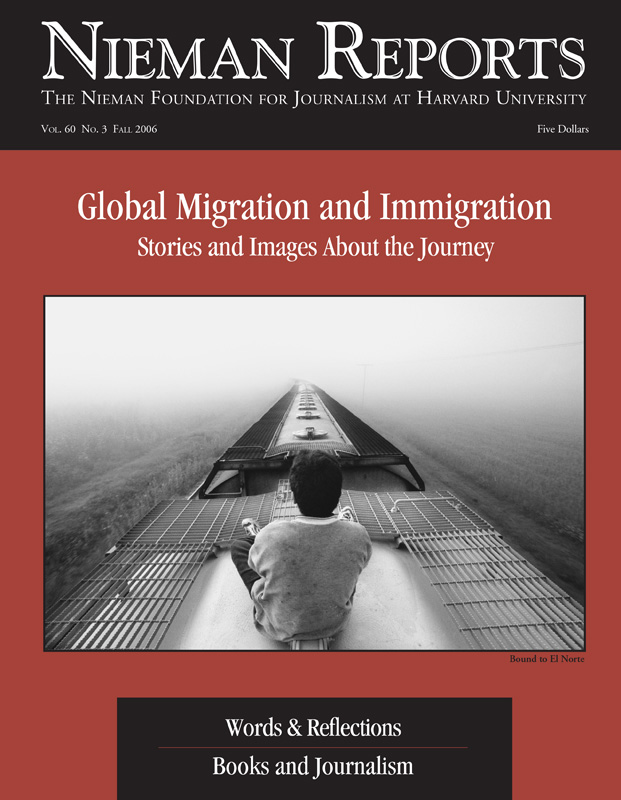Contending that Daniel Okrent’s book “Public Editor #1” might be “the only collection of ombudsman columns ever assembled that is a genuine page turner,” former Boston Globe ombudsman, Mark Jurkowitz, now with the Project for Excellence in Journalism, introduces some of the author’s candid reflections on the challenging 18 months he spent as The New York Times’ first “public editor” during a time of increased public scrutiny of the newspaper’s coverage and practices. Barry Sussman, editor of the Nieman Watchdog Project, notes that news media observer Eric Boehlert uses his book, “Lapdogs: How the Press Rolled Over for Bush,” to identify and scrupulously document “just about every press misjudgment, foible, stupidity, bias and kowtow” that the press has exhibited in its failure “to assert itself and hold the administration accountable.”
Samuel Rachlin, who has reported extensively in the United States for Danish television, uses Stephen Hess’s findings in his book, “Through Their Eyes: Foreign Correspondents in the United States,” as a starting point in describing some of the “disgraceful” common practices he observed among his foreign peers in their coverage from Washington, D.C. And he offers a different strategy for news organizations to consider in how they use foreign correspondents.
After finishing his Nieman year, Brent Walth, a reporter with The Oregonian, taught journalism in Harvard University’s summer school. He assigned to his beginning students Samuel G. Freedman’s book, “Letters to a Young Journalist,” and their positive response to it confirmed his sense of the value of Freedman’s message. Walth applauds the author for having “the courage to say things most of us in the newsroom know but rarely admit.”
In her role as executive producer of PBS’s “Between the Lions,” Judy Stoia figures out ways to link visual storytelling with letters and words as a way of helping young children learn how to read. With the recent publication of books about news events and issues that are targeted at an adolescent audience — two of them by New York Times reporters — she finds the possibilities they present encouraging. “At a minimum,” she writes, they will “demystify the paper to a generation that probably has never read The New York Times.”
Retired syndicated columnist Jules Witcover explains how linguist Geoffrey Nunberg’s book, “Talking Right,” burrows beneath the “linguistic dexterity” of political leaders, but he focuses, too, on where this verbal jousting leaves journalists. Their job, he decides, is “to decipher for the public the linguistic obfuscations, exaggerations and deceptions that convey false claims or accusations by the perpetrator.” Longtime Philadelphia Daily News obituary writer Jim Nicholson appreciates the meticulous attention that Marilyn Johnson devotes to the “dead beat,” in her book of that name, and describes the odd way in which he found his way to this beat and what he did to influence the writing of obituaries once he got there. “My words gave readers thousands of moments to remember of little lives well lived,” he writes. “Perhaps I even gave them the secrets of how to live one well.” And former Sports Illustrated writer Jim Kaplan visits the memoir, “Full Swing: Hits, Runs and Errors in a Writer’s Life,” by New York Times sportswriter Ira Berkow. He takes from it an understanding of how Berkow’s childhood experiences in Chicago — his family, schooling and jobs — shaped much about how he handled himself as a journalist. “Even with these early lessons in nuance, observation and humor,” Kaplan writes, “it took Berkow some years to emerge as a writer.”


